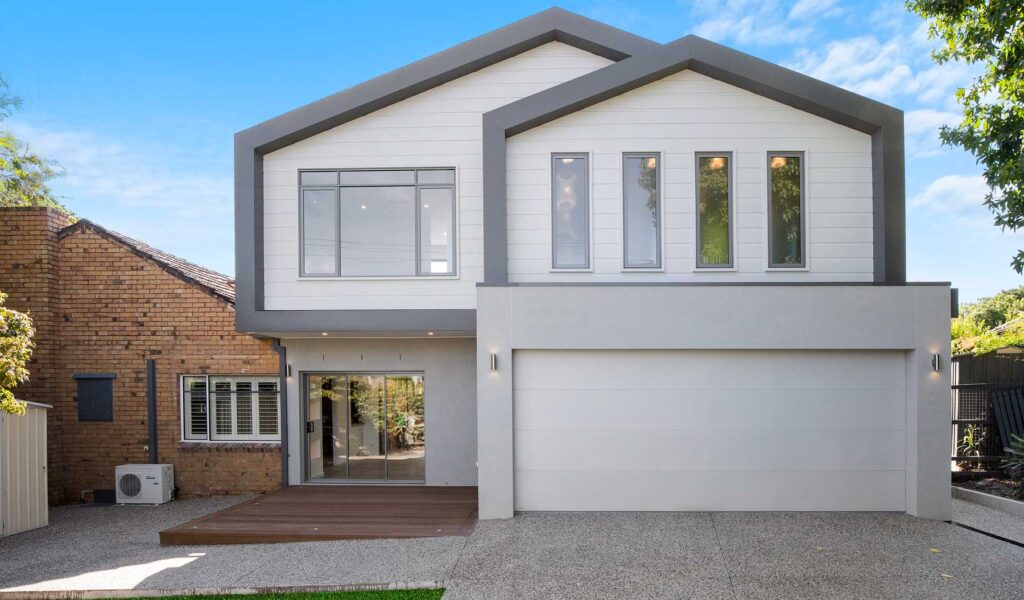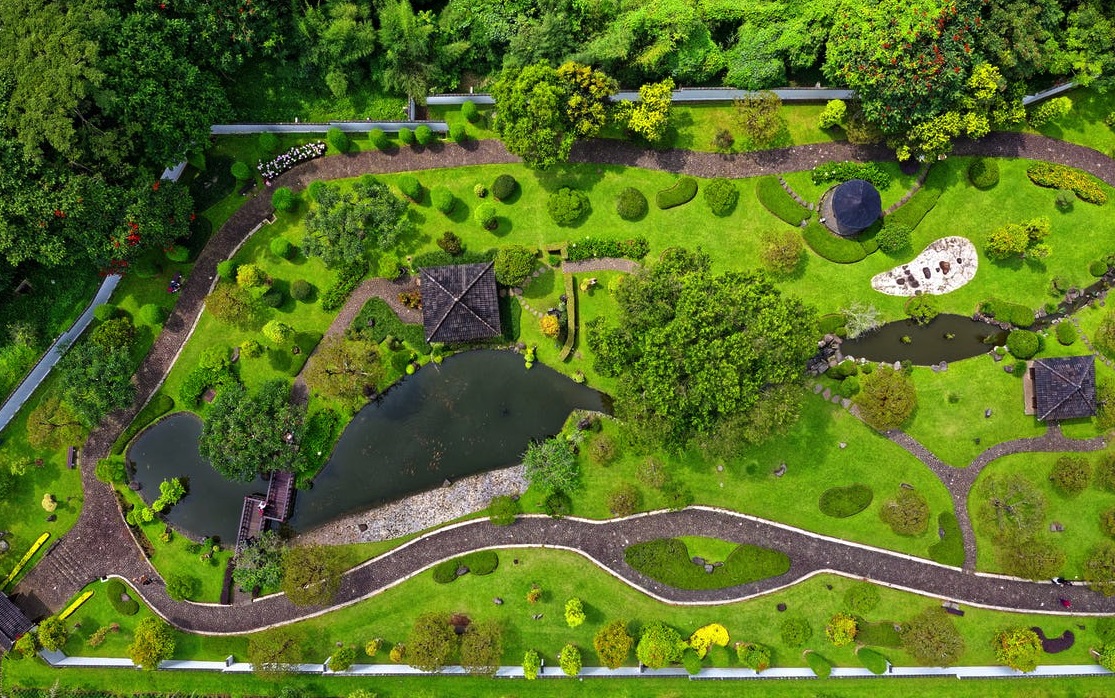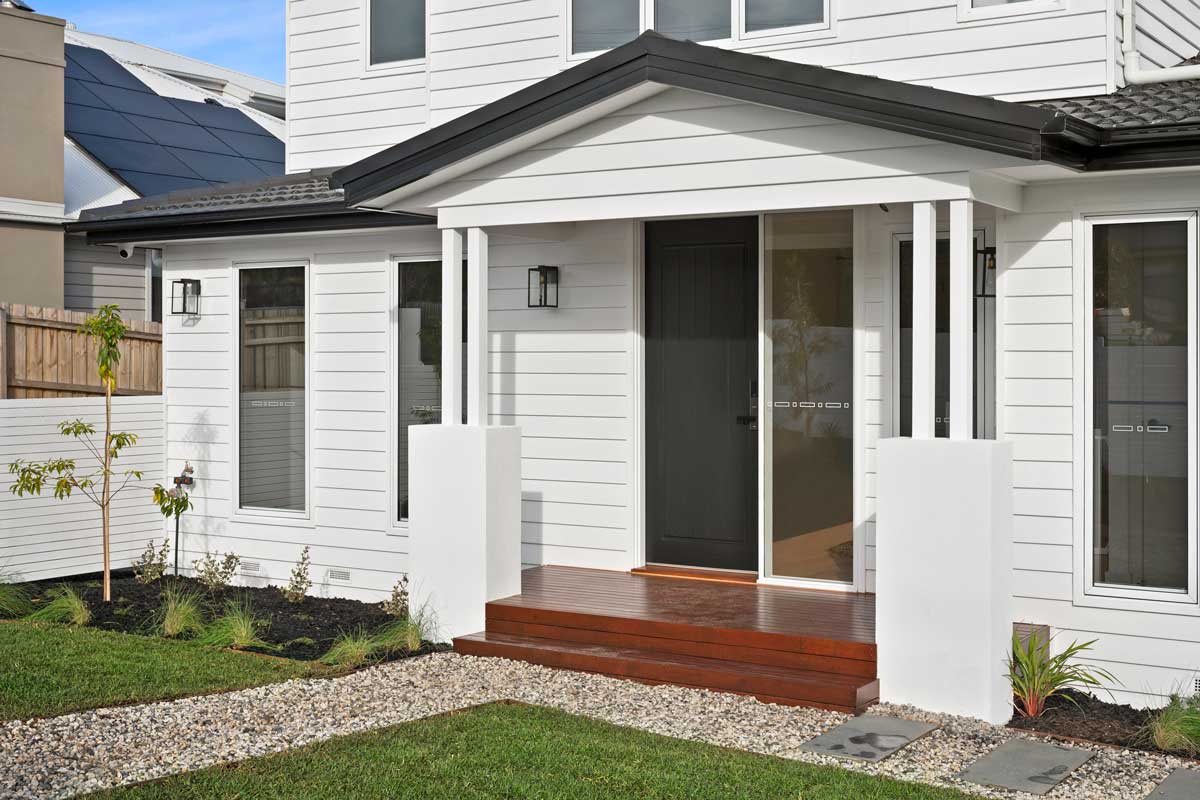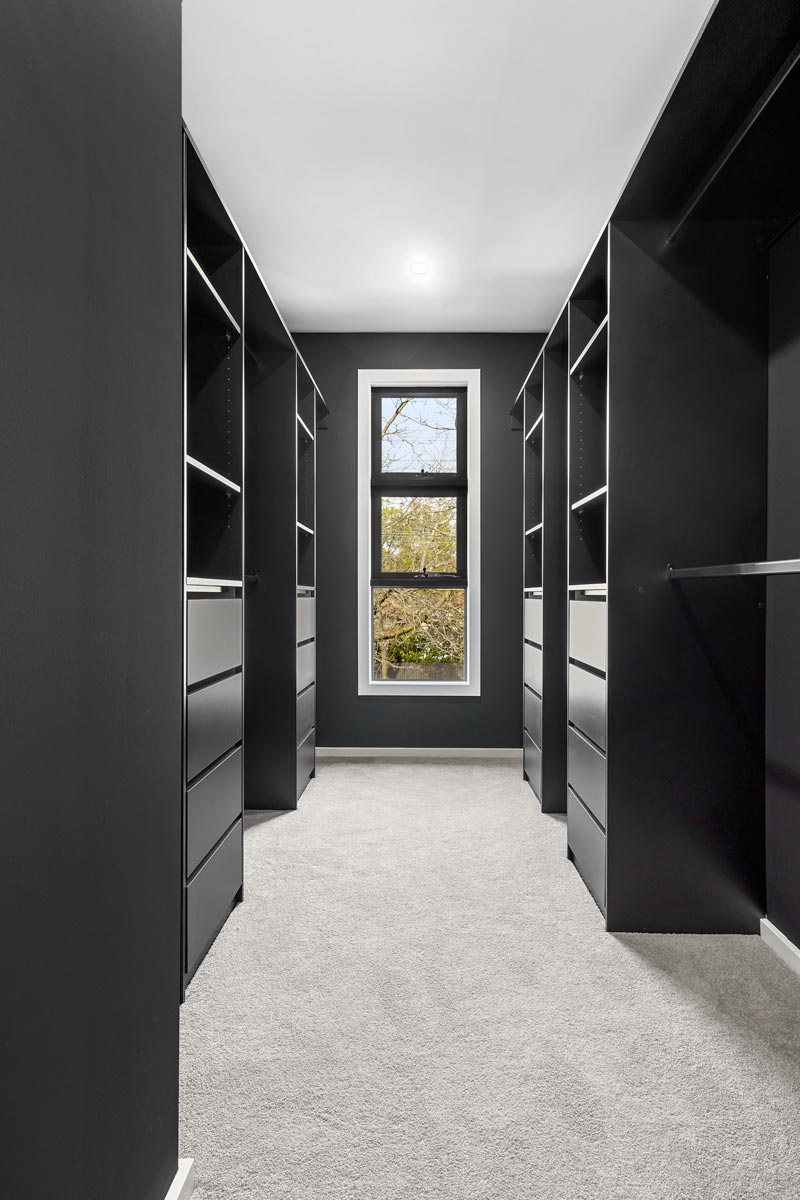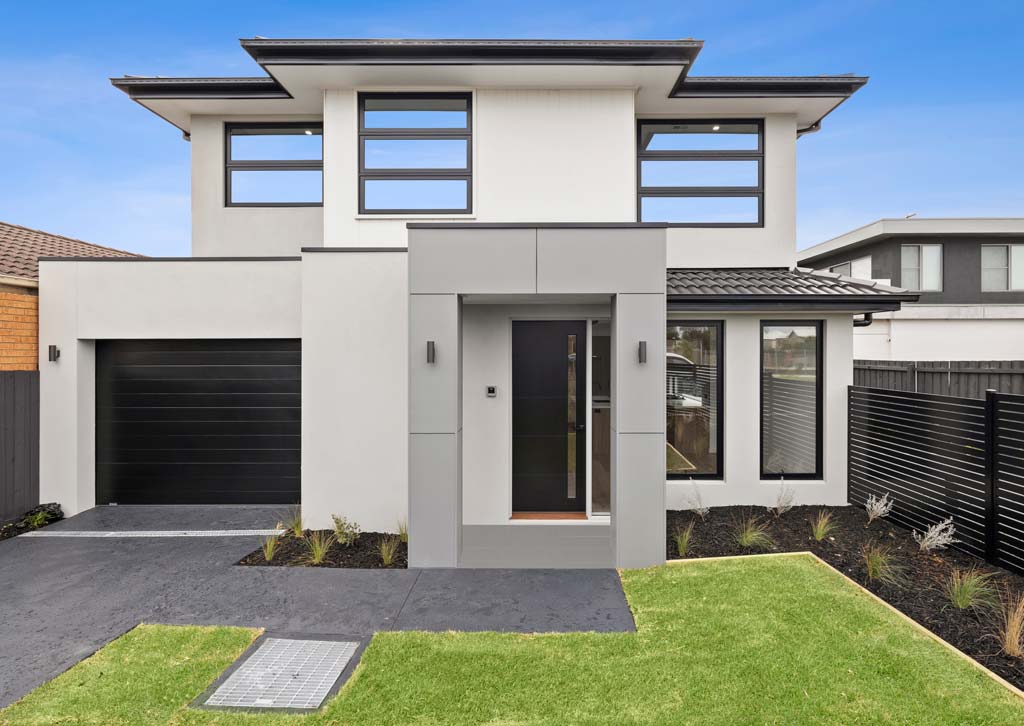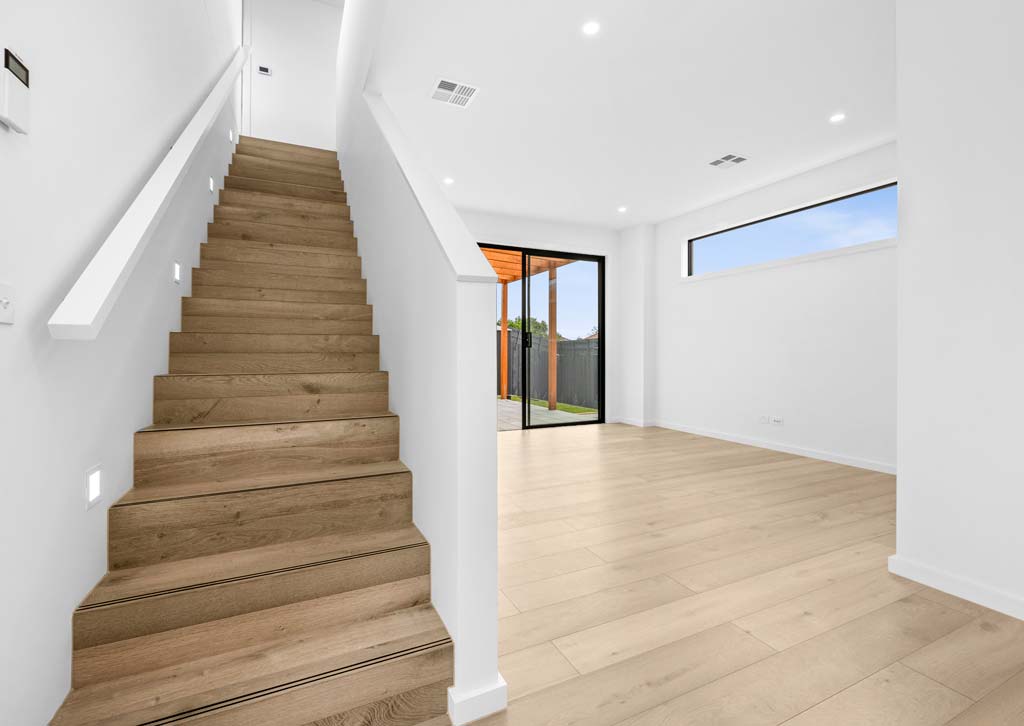Real estate development that focuses on creating new homes in existing or newly created neighbourhoods is known as residential development.
Site plans, schematics, schematics, site plans, and conceptual layouts are created for residential development projects, which are then used to build infrastructure and private residences for individuals or families.
The scope of residential development can encompass, but is not limited to, the following types of building:
- Single-family detached houses
- Townhouse complexes
- Multiple-unit dwellings
- Condominiums
- Suburbs
Subdivisions are a type of residential development. Each home in a subdivision is constructed on its lot, making up the larger community.
Refurbishing or restoring an existing building's façade or infrastructure is another type of residential construction project that can increase curb appeal and resale value.
Now that you have a high-level understanding of a residential development project let's compile a list of the essentials.
Real Estate Residential Development Importance
While there are certainly real estate developers in the business solely for the financial reward, the best of the breed do what they do because they genuinely enjoy it. Their mission is to make a difference in the community through real estate development.
This can have far-reaching consequences for the local community, transforming once-isolated settlements into thriving urban centres. There would be no places to live, no places to shop, no places to learn, no places to get medical care, and no places to heal without real estate development.
The growth of our society is dependent on the development of new real estate.
Adapting To A Changing Population's Needs
The landscapes of our urban centres are ever-evolving. These areas must be able to accommodate a growing population, whether that growth is people moving from cities to suburbs or from suburbs to cities. For this reason, there must be adequate dwellings.
There are also restaurants, grocery stores, schools, hospitals, and other businesses in the area. Developers boost local economies in large and small cities by investing in real estate. Cities expand, and their populations flourish as more space is devoted to dwellings, businesses, and other necessities.
Building Renovations
We can now reduce our water and energy consumption thanks to technological advancements. The regulations governing construction now favour greener, more eco-friendly architecture. These updated requirements apply to new construction and renovation projects in the real estate industry.
They can then make structures that are more comfortable year-round with improved thermal efficiency and reduced demand on the power grid. Furthermore, thanks to advancements in engineering, modern buildings are non-painful and much more adaptable to the elements.
Creating Wealthy Communities
Economically, local communities also benefit from real estate development. Simply constructing something creates jobs, which has a multiplicative effect on the economy and the lives of ordinary people.
New commercial developments allow for the establishment of businesses and the construction of community staples like schools and hospitals, both of which contribute to economic growth and the creation of new jobs.
More people move to grow communities as a result of real estate development, while in larger cities, it can revitalise areas that have lost their lustre. Property values in the area are being supported and even increased by these developments, which is good for business.
The Single-Family Homes
A single-family dwelling typically takes the form of a detached house located on its lot.
A single-family residence is a detached building on its plot of land that serves as a single-family home, complete with its kitchen, private bathroom(s), and separate utility hookups.
The official government definition is more inclusive. A detached home, a semi-detached home, a row home, or a townhouse all fall under the umbrella term "single-family home." They note, however, that attached dwellings "must be kept separate from the adjacent entity by a ground-to-roof wall" to be classified as single-family homes. Additionally, attached units are not permitted to share HVAC or utility systems or with units above or below.
Single-Family Residential Development Examples
People who value seclusion and a sizable yard should look into purchasing a single-family home. They must, however, be capable of covering the costs associated with maintaining a single-family dwelling.
Here are a few examples of the wide varieties of single-family homes contributing to this trend.
- Bungalow
- Ranch-style homes
- Cottages
- Mansions
- Townhouse
- Tiny homes
- Condominiums
The Advantages And Disadvantages Of Single-Family Residential Development
There are some benefits and drawbacks to a single-family home that you should be aware of before making your decision. However, the benefits and drawbacks can change depending on the area and the kind of real estate you're looking at. See if there is unity between this checklist and your specific circumstances.
Advantages Of Single-Family Homes:
- Privateness is increased in single-family homes because they are not attached to other buildings and sit on their plot of land. If there aren't any people sharing walls with you, the volume of your voice doesn't matter as much.
- Single-family homes typically have more room than apartments or condos with multiple occupants. Ross also notes that such places tend to have more space for storing things. Many also have enough space outside for a shed, garage, or barn.
- Single-family homes, according to Ross, also give you more flexibility in designing the exterior. This style of the house also allows for easier additions and renovations.
Disadvantages Of Single-Family Homes
- Single-family homes tend to be more expensive than other real estate options. This is especially important to consider when purchasing a large piece of land.
- Mike Kistner, a real estate agent in California, points out that the income potential of a single-family home is much lower than that of a multi-family home. One common strategy is for the owner of a multi-family building to live in one of the units while renting out the others, with the rent collected as a significant portion of the mortgage payment.
- You'll have to hire someone or take care of repairs and maintenance yourself if your single-family home isn't part of community service by a homeowners' association.
The Multi-Family Homes
Houses that can house multiple families at once are called "multi-family homes." They can be anything from a duplex (two homes in one structure) to single-family houses or even four-unit apartment buildings. (Generally speaking, commercial properties are those with five or more units.)
The owner of a multi-family dwelling has the option of occupying one of its units while renting out the rest or vice versa. Financing requirements for multifamily dwellings vary depending on whether or not the owner intends to occupy the building.
You are an investor if you don't intend to live in the home you purchase. The property's potential rental income can improve your mortgage application, and it could even allow you to borrow more money.
Multi-Family Residential Development Examples
Multiple-family dwellings come in a wide range of designs and square footage options. There are benefits and drawbacks to every housing option.
- Duplex/Triplex
- Condo
- Townhome
Multi-Family Residential Development Pros And Cons
Pros
- Income from rent collected on a multifamily building can be used to pay the mortgage and other operating costs.
- You'll have an easier time dealing with maintenance and fixes. If you own a rental property and reside there, you'll be better able to keep an eye on things and react quickly in an emergency.
- A large portion of your payments for mortgage interest and repairs can be deducted as business expenses.
- These homes can be great for families with many members who want to live together but still have their own space. (They also assist you in preserving future flexibility in this regard.)
- Even if you move out of the unit you originally lived in, you can keep it as a rental investment and earn more money by renting it out to others.
Cons
- Buying a multi-family home can be more expensive up front than buying a single-family home because of the additional units you'll purchase.
- Being a landlord requires the dedication of time, especially if you choose to reside close to your tenants. You should feel at ease when negotiating lease terms, screening tenants, and dealing with them professionally when rent is late or there are noise complaints or damage to the property.
- You must continue to make mortgage payments regardless of whether or not you have tenants in your units. You must also pay for emergency repairs, such as fixing a leaking roof or unclogging a toilet.
- You must have access to a sizable emergency fund. While the effect of any one unit on cash flow will diminish as the number of properties increases, landlords should still have a healthy emergency fund in case of maintenance emergencies or vacancies.
- When trying to sell a multifamily property with current tenants, it can be not easy to schedule showings and appraisals while also keeping the occupants informed.
The Mixed-Use Developments
Mixed-use developments in a city, municipality, or state include residential and non-residential structures. These real estate developments are typically created in response to a specific environment and can be as large as an entire neighbourhood.
These projects aim to improve home affordability, make it easier to walk to work and do errands, and strengthen neighbourhoods by incorporating industrial and commercial development with residential living. Mixed-use developments, when executed properly, combine and complement different types of real estate.
Public infrastructures and open green spaces are typical components of mixed-use communities. Public areas consist of plazas, walkways, and corridors that connect buildings. Public infrastructure investments in mixed-use development projects in densely populated areas have helped more people take advantage of public transportation, walk, and bike to get where they need to go.
Construction of pedestrian paths with shops and offices within viewing distance has increased in density along streets in Denver, Seattle, & Boston as part of mixed-use developments. This has led to a reduction in the need for garages, alleys, and surface lots in these urban areas.
Mixed-Use Residential Development Examples
It's encouraging to see mixed-use communities springing up across the country. However, not all properties with multiple uses enjoy the advantages above. The overall performance of a property, regardless of its type, can be affected by some factors.
(This entails factors such as area, size, and placement.) However, when looking for the ideal mixed-use investment, investors can use the examples of several successful melded-use developments as a guide.
Some examples of well-executed mixed-use projects are provided below.
- The Wharf is a proposed 24-acre waterfront community on the Potomac River. It will be among the biggest construction initiatives for the town, with arrangements for hotels, shops, establishments, parking, and more.
- Thomas Properties Group's Wilshire Grand Center mixed-use development required one of the city's largest building permits. The most remarkable feature of this property, however, will be the 73-story earthquake-proof tower built there.
- Although work hasn't yet begun on Port Covington in Maryland, when it is finished, the site will feature over 250 apartments, 180,00 sqft of office space, and more.
- Swire Properties completed construction on Brickell City Center, a 5.4-million-square-foot complex, not too long ago. There are high-end apartments, restaurants, and more in the towers.
- This mixed-use property, known as City Point Brooklyn, will be among Brooklyn's largest mixed-use hubs. Acadia Realty Trust & Washington Square Partners are responsible for the project's development.
- Lincoln Yards is a construction site with a planned final size of 53 acres. There will be a soccer stadium in addition to the new homes, hotels, retail, and office space.
The Advantages And Disadvantages Of Mixed-Use Residential Development
The Advantages Of Mixed-Use Development
Modern mixed-use development is usually billed as a way to rejuvenate communities by creating places frequented by a wide range of residents, workers, and shoppers. While mixed-use developments are great for the common good, their advantages go far beyond that.
First, instead of designing and constructing separate systems, infrastrcture can be consolidated in mixed-use developments. Some instances of this are:
- Fewer expensive sewer tap-ins, if any at all.
- Power and water are provided by the same company.
- Integrated security and fire safety measures.
- Garages are prefered over lots because of the better space utilisation they provide.
Although it may take more effort and time to find a viable design, developers can save money in the long run by focusing on mixed-use projects.
The Disadvantages Of Mixed-Use Development
Any builder who has attempted a mixed-use project knows how unpredictable the results can be. Numerous obstacles prevent progress in many areas.
One major issue is the local laws. Cities and towns have a hard time approving development plans due to zoning regulations put in place decades or even centuries ago to keep residential areas, commercial areas, and industrial areas separate. Although these laws can be amended, doing so is often met with resistance from local interest groups that prefer to keep things as they are.
The availability of necessary public services and ageing infrastructure could also be obstacles. Municipalities may need to upgrade infrastructure like roads, sewers, and power lines to accommodate these developments.
It is not uncommon for municipalities to require the developer to contribute to these astronomical costs. It's possible that fire stations serving outlying neighbourhoods don't have the resources to safeguard a high-rise complex if constructed inward rather than outward.
The issue of funding is a further worry. Lenders are more likely to back mixed-use developments as their popularity rises. Still, they present a greater challenge in terms of obtaining funding. If the developer doesn't have enough money to pay again for the project all at once, this is an obstacle that must be overcome.
In addition, builders frequently apply for and receive local tax credits and rebates to reduce overall project costs. Some cities are happy to make these concessions, while others are reluctant to give up much-needed tax money.
Conclusion
Residential development is the process of creating new homes in existing or newly created neighbourhoods. It can encompass single-family detached houses, townhouse complexes, multiple-unit dwellings, condominiums, subdivisions, and renovations or restoring an existing building's façade or infrastructure. Real estate development is important for the local community, as it can transform once-isolated settlements into thriving urban centres. Developers boost local economies by investing in real estate, as cities expand and their populations flourish as more space is devoted to dwellings, businesses, and other necessities. Building renovations can reduce water and energy consumption, and modern buildings are non-painful and more adaptable to the elements.
Real estate development has a multiplicative effect on the economy and the lives of ordinary people. New commercial developments allow for the establishment of businesses and the construction of community staples like schools and hospitals, which contribute to economic growth and the creation of new jobs. Single-family homes are a detached building on its plot of land that serves as a single-family home, complete with its kitchen, private bathroom(s), and separate utility hookups. Examples of single-family homes include bungalows, ranch-style homes, cottages, mansions, townhouses, tiny homes, and condominiums. The advantages and drawbacks of single-family residential development can change depending on the area and the kind of real estate you're looking at.
The most important details in this text are the advantages and disadvantages of single-family homes. Single-family homes typically have more room than apartments or condos with multiple occupants, and have more flexibility in designing the exterior. However, single-family homes tend to be more expensive than other real estate options, and the income potential of a single-family home is much lower than that of a multi-family home. Multi-family dwellings can be anything from a duplex (two homes in one structure) to single-family houses or even four-unit apartment buildings. Financing requirements for multi-family dwellings vary depending on whether or not the owner intends to occupy the building.
Multi-family dwellings come in a wide range of designs and square footage options, and there are benefits and drawbacks to every housing option. Multi-family homes are great for families with many members who want to live together but still have their own space. They can be more expensive up front than buying a single-family home due to the additional units you'll purchase. Being a landlord requires the dedication of time, especially if you choose to reside close to your tenants. Mixed-use developments in a city, municipality, or state include residential and non-residential structures.
These projects aim to improve home affordability, make it easier to walk to work and do errands, and strengthen neighbourhoods by incorporating industrial and commercial development with residential living. When executed properly, mixed-use developments combine and complement different types of real estate. Mixed-use development is a popular way to revitalize communities by creating places frequented by a wide range of residents, workers, and shoppers. Public infrastructure investments in mixed-use development projects have helped more people take advantage of public transportation, walk, and bike to get where they need to go. Examples of successful mixed-use developments include The Wharf, Thomas Properties Group's Wilshire Grand Center, Port Covington, Swire Properties' Brickell City Center, City Point Brooklyn, and Lincoln Yards.
Mixed-use development is usually billed as a way to rejuvenate communities by creating places frequented by a wide range of residents, workers, and shoppers, but its advantages go far beyond that. Examples of successful mixed-use developments include The Wharf, Thomas Properties Group's Wilshire Grand Center, Port Covington, Swire Properties' Brickell City Center, City Point Brooklyn, and Lincoln Yards. The advantages of mixed-use development are usually billed as a way to rejuvenate communities by creating places frequented by a wide range of residents, workers, and shoppers, but their advantages go far beyond that. Mixed-use developments can save money in the long run by combining infrastructure, such as sewer tap-ins, power and water provided by the same company, integrated security and fire safety measures, and garages. However, mixed-use projects can be unpredictable due to local laws, availability of public services, and ageing infrastructure.
Lenders are more likely to back mixed-use developments as their popularity rises, but they present a greater challenge in terms of obtaining funding. Builders often apply for and receive local tax credits and rebates to reduce overall project costs, but some cities are reluctant to give up much-needed tax money.
Content Summary:
- Real estate development that focuses on creating new homes in existing or newly created neighbourhoods is known as residential development.
- Site plans, schematics, schematics, site plans, and conceptual layouts are created for residential development projects, which are then used to build infrastructure and private residences for individuals or families.
- Each home in a subdivision is constructed on its lot, making up the larger community.
- Refurbishing or restoring an existing building's façade or infrastructure is another type of residential construction project that can increase curb appeal and resale value.
- Now that you have a high-level understanding of a residential development project let's compile a list of the essentials.
- While there are certainly real estate developers in the business solely for the financial reward, the best of the breed do what they do because they genuinely enjoy it.
- Their mission is to make a difference in the community through real estate development.
- This can have far-reaching consequences for the local community, transforming once-isolated settlements into thriving urban centres.
- There would be no places to live, no places to shop, no places to learn, no places to get medical care, and no places to heal without real estate development.
- The growth of our society is dependent on the development of new real estate.
- The landscapes of our urban centres are ever-evolving.
- These areas must be able to accommodate a growing population, whether that growth is people moving from cities to suburbs or from suburbs to cities.
- For this reason, there must be adequate dwellings.
- There are also restaurants, grocery stores, schools, hospitals, and other businesses in the area.
- Developers boost local economies in large and small cities by investing in real estate.
- Cities expand, and their populations flourish as more space is devoted to dwellings, businesses, and other necessities.
- We can now reduce our water and energy consumption thanks to technological advancements.
- The regulations governing construction now favour greener, more eco-friendly architecture.
- Economically, local communities also benefit from real estate development.
- Simply constructing something creates jobs, which has a multiplicative effect on the economy and the lives of ordinary people.
- New commercial developments allow for the establishment of businesses and the construction of community staples like schools and hospitals, both of which contribute to economic growth and the creation of new jobs.
- More people move to grow communities as a result of real estate development, while in larger cities, it can revitalise areas that have lost their lustre.
- Property values in the area are being supported and even increased by these developments, which is good for business.
- A single-family dwelling typically takes the form of a detached house located on its lot.
- A single-family residence is a detached building on its plot of land that serves as a single-family home, complete with its kitchen, private bathroom(s), and separate utility hookups.
- The official government definition is more inclusive.
- A detached home, a semi-detached home, a row home, or a townhouse all fall under the umbrella term "single-family home."
- They note, however, that attached dwellings "must be kept separate from the adjacent entity by a ground-to-roof wall" to be classified as single-family homes.
- Additionally, attached units are not permitted to share HVAC or utility systems or with units above or below.
- People who value seclusion and a sizable yard should look into purchasing a single-family home.
- They must, however, be capable of covering the costs associated with maintaining a single-family dwelling.
- Here are a few examples of the wide varieties of single-family homes contributing to this trend.
- There are some benefits and drawbacks to a single-family home that you should be aware of before making your decision.
- However, the benefits and drawbacks can change depending on the area and the kind of real estate you're looking at.
- See if there is unity between this checklist and your specific circumstances.
- Advantages Of Single-Family Homes: Privateness is increased in single-family homes because they are not attached to other buildings and sit on their plot of land.
- If there aren't any people sharing walls with you, the volume of your voice doesn't matter as much.
- Single-family homes typically have more room than apartments or condos with multiple occupants.
- Ross also notes that such places tend to have more space for storing things.
- Many also have enough space outside for a shed, garage, or barn.
- Single-family homes, according to Ross, also give you more flexibility in designing the exterior.
- This style of the house also allows for easier additions and renovations.
- Single-family homes tend to be more expensive than other real estate options.
- This is especially important to consider when purchasing a large piece of land.
- Mike Kistner, a real estate agent in California, points out that the income potential of a single-family home is much lower than that of a multi-family home.
- One common strategy is for the owner of a multi-family building to live in one of the units while renting out the others, with the rent collected as a significant portion of the mortgage payment.
- You'll have to hire someone or take care of repairs and maintenance yourself if your single-family home isn't part of community service by a homeowners' association.
- Houses that can house multiple families at once are called "multi-family homes."
- Generally speaking, commercial properties are those with five or more units.)The owner of a multi-family dwelling has the option of occupying one of its units while renting out the rest or vice versa.
- Financing requirements for multifamily dwellings vary depending on whether or not the owner intends to occupy the building.
- You are an investor if you don't intend to live in the home you purchase.
- The property's potential rental income can improve your mortgage application, and it could even allow you to borrow more money.
- Multiple-family dwellings come in a wide range of designs and square footage options.
- Pros Income from rent collected on a multifamily building can be used to pay the mortgage and other operating costs.
- You'll have an easier time dealing with maintenance and fixes.
- If you own a rental property and reside there, you'll be better able to keep an eye on things and react quickly in an emergency.
- A large portion of your payments for mortgage interest and repairs can be deducted as business expenses.
- These homes can be great for families with many members who want to live together but still have their own space.
- They also assist you in preserving future flexibility in this regard.
- Even if you move out of the unit you originally lived in, you can keep it as a rental investment and earn more money by renting it out to others.
- Buying a multi-family home can be more expensive up front than buying a single-family home because of the additional units you'll purchase.
- Being a landlord requires the dedication of time, especially if you choose to reside close to your tenants.
- You should feel at ease when negotiating lease terms, screening tenants, and dealing with them professionally when rent is late or there are noise complaints or damage to the property.
- You must continue to make mortgage payments regardless of whether or not you have tenants in your units.
- You must also pay for emergency repairs, such as fixing a leaking roof or unclogging a toilet.
- You must have access to a sizable emergency fund.
- While the effect of any one unit on cash flow will diminish as the number of properties increases, landlords should still have a healthy emergency fund in case of maintenance emergencies or vacancies.
- When trying to sell a multifamily property with current tenants, it can be not easy to schedule showings and appraisals while also keeping the occupants informed.
- Mixed-use developments in a city, municipality, or state include residential and non-residential structures.
- These real estate developments are typically created in response to a specific environment and can be as large as an entire neighbourhood.
- These projects aim to improve home affordability, make it easier to walk to work and do errands, and strengthen neighbourhoods by incorporating industrial and commercial development with residential living.
- Mixed-use developments, when executed properly, combine and complement different types of real estate.
- Public infrastructures and open green spaces are typical components of mixed-use communities.
- Public areas consist of plazas, walkways, and corridors that connect buildings.
- Public infrastructure investments in mixed-use development projects in densely populated areas have helped more people take advantage of public transportation, walk, and bike to get where they need to go.
- Construction of pedestrian paths with shops and offices within viewing distance has increased in density along streets in Denver, Seattle, & Boston as part of mixed-use developments.
- This has led to a reduction in the need for garages, alleys, and surface lots in these urban areas.
- It's encouraging to see mixed-use communities springing up across the country.
- However, not all properties with multiple uses enjoy the advantages above.
- The overall performance of a property, regardless of its type, can be affected by some factors.
- This entails factors such as area, size, and placement.
- However, when looking for the ideal mixed-use investment, investors can use the examples of several successful melded-use developments as a guide.
- Some examples of well-executed mixed-use projects are provided below.
- The Wharf is a proposed 24-acre waterfront community on the Potomac River.
- It will be among the biggest construction initiatives for the town, with arrangements for hotels, shops, establishments, parking, and more.
- Grand Center mixed-use development required one of the city's largest building permits.
- The most remarkable feature of this property, however, will be the 73-story earthquake-proof tower built there.
- Although work hasn't yet begun on Port Covington in Maryland, when it is finished, the site will feature over 250 apartments, 180,00 sqft of office space, and more.
- Swire Properties completed construction on Brickell City Center, a 5.4-million-square-foot complex, not too long ago.
- There are high-end apartments, restaurants, and more in the towers.
- This mixed-use property, known as City Point Brooklyn, will be among Brooklyn's largest mixed-use hubs.
- First, instead of designing and constructing separate systems, infrastrcture can be consolidated in mixed-use developments.
- Some instances of this are:Fewer expensive sewer tap-ins, if any at all.
- Power and water are provided by the same company.
- Integrated security and fire safety measures.
- Garages are prefered over lots because of the better space utilisation they provide.
- Although it may take more effort and time to find a viable design, developers can save money in the long run by focusing on mixed-use projects.
- Any builder who has attempted a mixed-use project knows how unpredictable the results can be.
- Numerous obstacles prevent progress in many areas.
- One major issue is the local laws.
- Cities and towns have a hard time approving development plans due to zoning regulations put in place decades or even centuries ago to keep residential areas, commercial areas, and industrial areas separate.
- Although these laws can be amended, doing so is often met with resistance from local interest groups that prefer to keep things as they are.
- The availability of necessary public services and ageing infrastructure could also be obstacles.
- Municipalities may need to upgrade infrastructure like roads, sewers, and power lines to accommodate these developments.
- It is not uncommon for municipalities to require the developer to contribute to these astronomical costs.
- It's possible that fire stations serving outlying neighbourhoods don't have the resources to safeguard a high-rise complex if constructed inward rather than outward.
- The issue of funding is a further worry.
- Lenders are more likely to back mixed-use developments as their popularity rises.
- Still, they present a greater challenge in terms of obtaining funding.
- If the developer doesn't have enough money to pay again for the project all at once, this is an obstacle that must be overcome.
- In addition, builders frequently apply for and receive local tax credits and rebates to reduce overall project costs.
- Some cities are happy to make these concessions, while others are reluctant to give up much-needed tax money.
Frequently Asked Questions About Residential Development
What is a residential project?
Residential projects involve the construction of houses, apartment buildings, and even larger multi-storey high-rise buildings. Depending upon what the actual project entails, some residential projects can take on some commercial project characteristics. A residential builder may take their projects more personally.
What is an example of a residential area?
Related Definitions
Residential area means land used as a permanent residence or domicile, such as a house, apartment, nursing home, school, child care facility or prison, land zoned for such uses, or land where no zoning is in place.
Contemporary House Design for a Narrow Lot.
The cheapest house to build doesn't have to be small. With two stories of living space, this contemporary house plan would work great on a narrow lot. The super-simple design and open floor plan give you a spacious feeling, while cutting back on costs.
What are common residential areas?
Residential Common Area or “Residential Common Areas” shall mean any portion of the Residential Property which is for the primary use and benefit of all of the Owners of Lots and is designated as Residential Common Area on the Final Plat.
What is the simple meaning of residential buildings?
A residential building contains separate residences where a person may live or regularly stay. Each residence contains independent cooking and bathroom facilities and may be an apartment or a condominium.

